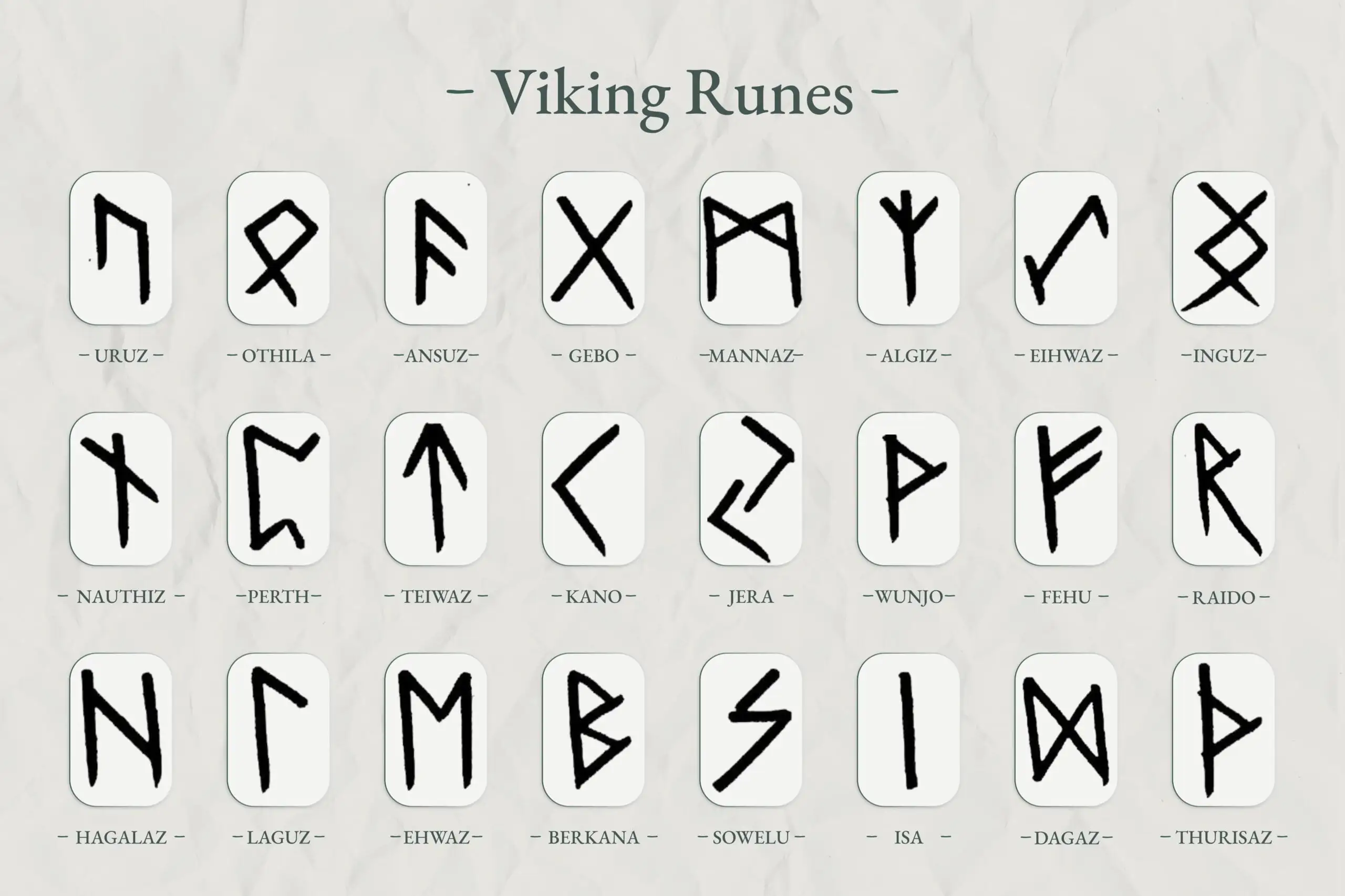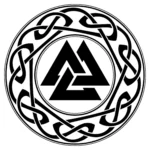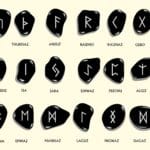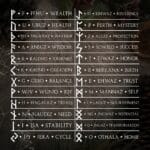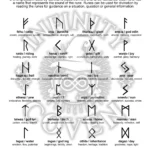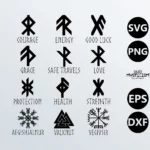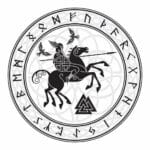Hey there, rune enthusiasts! Let’s dive into the captivating world of the Vikings and their mysterious symbols. As a history buff who’s crazy about these ancient cultures, I’ll guide you through the origins, meanings, and mind-blowing stories behind the Norse runes. Get ready for an adventure that will take you back to the days when Vikings ruled the seas and whispered secrets in runic code. Trust me, you won’t want to miss this epic journey into the realm of ancient wisdom and forgotten languages.
Unraveling the Secrets of Norse Runes
Imagine stepping into a world where symbols whispered ancient wisdom and held the power to shape destinies. That’s the captivating world of Norse runes, a captivating tapestry of history, culture, and the mystical.
These enigmatic carvings, etched into wood, stone, and metal, served as both a form of expression and a gateway to the unknown. Each rune carried a unique meaning, reflecting concepts like protection, communication, wealth, and joy.
The journey of Norse runes began as a writing system for the Germanic tribes of Scandinavia. But as they spread across cultures, they evolved into two distinct alphabets: the Elder Futhark, with 24 runes, and the Younger Futhark, with 16.
Over the centuries, the Norse runes continued to intrigue and inspire. Pagans and practitioners of Norse traditions have embraced them as a connection to their ancient roots. Even in modern times, people are drawn to these symbols for spiritual guidance and insight.
The allure of Norse runes lies in their ability to tap into the timeless wisdom of our ancestors. By studying their meanings and attuning ourselves to their energies, we can unlock a deeper understanding of ourselves, our world, and the cosmos.
Here’s a table to help you explore the meanings of some key Norse runes:
| Rune | Meaning |
|---|---|
| Fehu | Wealth, prosperity |
| Uruz | Strength, courage |
| Thurisaz | Protection, defense |
| Ansuz | Communication, inspiration |
| Raidho | Travel, journey |
| Kenaz | Knowledge, enlightenment |
| Gebo | Gift, partnership |
| Wunjo | Joy, harmony |
Embarking on your own journey with Norse runes is a transformative experience. By opening your mind to their secrets, you’ll discover a world of wisdom, power, and the eternal connection between the past, present, and future.
Unravel the enigmatic world of rune symbols and their profound meanings. Delve into the rune symbols and meanings, where each symbol holds a mystical power and ancient wisdom. Discover the secrets of viking rune symbols, unlocking the warrior spirit and the mythology of the North. Explore the captivating connections between runes and meanings, deciphering the messages encoded within these ancient scripts. Dive deep into the mystical realm of rune stone meanings, where stones whisper tales of ancient civilizations and spiritual guidance. Embark on a journey through the enigmatic world of futhark runes, uncovering the origins and evolution of these powerful symbols.
How were Norse runes used for communication?
The Norse runes were more than just a way to send messages. These mysterious symbols had magical powers and were used in all sorts of ways, from healing people to protecting them from harm.
Divine Guidance and Protection
Norsemen believed that runes had supernatural powers. They would carve them into whalebone and sleep with them under their pillows to cure diseases. They also wore runes as amulets to protect themselves from danger.
Inscribing History and Legacy
In addition to their magical uses, runes were also used to write down important events. They were carved into wood and stone, and these inscriptions have helped us to learn about the history of the Vikings.
Elder Futhark: The Viking Alphabet
The Viking rune alphabet, called the Elder Futhark, had 24 symbols. Each rune had a different meaning, such as strength, protection, or wisdom. Runes could be written for both magical and practical purposes.
Key Points:
- The Norse runes were used for more than just communication.
- They were also used for divination, protection, and casting spells.
- The Elder Futhark is the name of the Viking rune alphabet.
- Runes were carved into wood, bone, and stone to record history and invoke supernatural powers.
Table: Common Uses of Runes
| Rune | Meaning | Use |
|---|---|---|
| Ansuz | The god Odin | Communication, wisdom |
| Thurisaz | The giant Thurisaz | Protection, strength |
| Raido | The god Thor’s chariot | Travel, journeys |
| Kenaz | Fire | Transformation, purification |
| Gebo | The gift | Partnership, relationships |
| Wunjo | Joy | Happiness, contentment |
Magic and the Norse Runes: A Journey Through Ancient Enchantments
In the depths of ancient Germanic and Scandinavian cultures, the magic of the Norse runes captivates our imagination. These enigmatic symbols weren’t just letters; they were windows into a realm of mystery, power, and connection to our ancestors.
Think of the Norse runes as a collection of cosmic keys, each unlocking a different chamber of the unknown. With three distinct realms to explore – Seiðr, Galdr, and Runic Inscriptions – rune magic offered a path to otherworldly journeys, incantations that could bend the elements, and talismans that held the power to heal, protect, and summon magic.
Seiðr, the secret practice of sorcerers and priestesses, transported them to ethereal realms where spirits whispered their wisdom. Galdr, the art of spoken magic, gave words the power to alter destiny. And as runes were carved into stone, wood, and bone, they became tangible manifestations of the unseen forces that shaped the Norse worldview:
| Rune | Meaning |
|---|---|
| Fehu | Wealth and Cattle |
| Uruz | Strength and Courage |
| Thurisaz | Protection and Defense |
| Ansuz | Knowledge and Wisdom |
| Raidho | Travel and Journey |
| Kenaz | Inspiration and Creativity |
| Gebo | Partnership and Gifts |
| Wunjo | Joy and Harmony |
Each rune was a microcosm of the cosmos, reflecting the interconnectedness of nature, humanity, and the divine. They were not just symbols of power but vessels for ancient wisdom and a glimpse into the unseen realms that shaped human existence.
Today, the magic of the Norse runes echoes through spiritual practices and esoteric traditions. They serve as a bridge connecting us to the wisdom of our ancestors and remind us of the enduring power of symbols and the unseen forces that continue to shape our world.
Norse Runes and Divination: Unraveling the Tapestry of Fate
Ever wondered if ancient symbols could reveal your destiny? Enter Norse runes, mysterious characters that do more than just communicate. They dabble in the realm of magic and divination, offering glimpses into the unknown.
Runes: Harbingers of the Divine
Picture runes as whispers from a wiser source, each symbol holding a sacred meaning. In ancient times, people tossed these runes to predict the future, seek guidance, and unlock the secrets of the past and present. They believed runes had the power to unravel the threads of fate, revealing hidden truths.
Viking Runes: Keys to Ancient Lore
Viking runes, the most famous type of runes, come in two forms: the Elder Futhark and the Younger Futhark. The Elder Futhark, with its 24 characters, is like the original recipe book of rune divination. The Younger Futhark, with its more simplified 16 characters, came later and was mainly used for writing.
Runes in Today’s World
Fast forward to the present day, and runes are still making waves in spirituality and paganism. People use them to explore their own stories, uncover hidden truths, and seek guidance on their life’s path. Each rune embodies an energy and meaning, helping individuals connect with their inner wisdom and empowerment.
Key Points in a Nutshell:
- Norse runes are more than just letters; they’re also mystical symbols of magic and divination.
- The Elder Futhark, with 24 characters, was heavily used for divination purposes.
- Runes continue to play a role in modern spirituality and self-discovery.
Our Top Sources:
- Viking Runes and Meanings: History, Use, and Divination
Table: Comparison of Elder Futhark and Younger Futhark
| Characteristic | Elder Futhark | Younger Futhark |
|---|---|---|
| Number of characters | 24 | 16 |
| Period of use | 1st century CE to 8th century CE | 9th century CE onwards |
| Main purpose | Writing and divination | Primarily writing |
| Popularity | Used throughout Scandinavia | Mainly used in Scandinavia and Germanic-speaking regions |
FAQ
Q1: What are the origins of Norse runes?
A1: Norse runes evolved from Germanic tribes around the turn of the Common Era (CE), influenced by earlier writing systems like the Latin alphabet.
Q2: What are the two main runic alphabets?
A2: The two main runic alphabets are the Elder Futhark (24 runes) and the Younger Futhark (16 runes), with the Elder Futhark being the older and more complex system.
Q3: What is the significance of runes beyond writing?
A3: Runes were not only used for writing but also for divination, magic, protection, and other ritualistic practices, as they were believed to possess supernatural powers.
Q4: How did runes spread beyond Scandinavia?
A4: Runes spread from Scandinavia to other Germanic cultures through trade, travel, and cultural exchange, influencing the development of writing systems in England and other European regions.
Q5: Are runes still used today?
A5: Yes, runes continue to be used by some modern pagans, Heathens, and practitioners of Norse traditions for spiritual purposes, divination, and personal growth.
